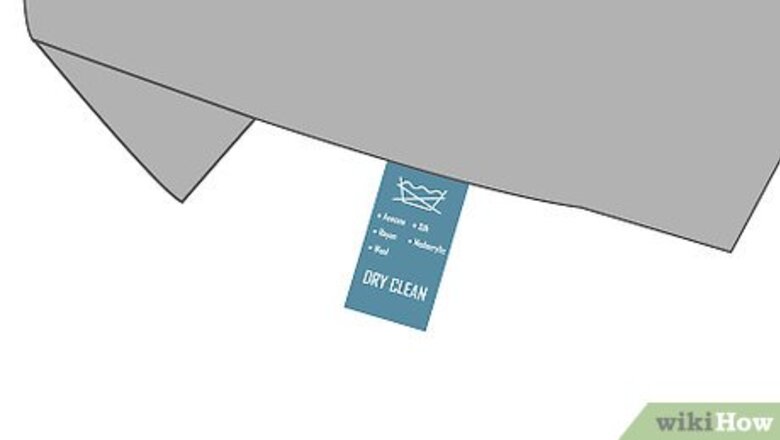
views
Removing Stains from Non-washable Fabrics
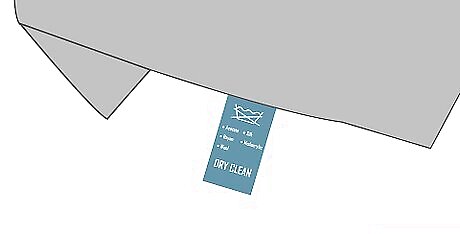
Know how to spot non-washable fabrics. Most garments will come with a tag that gives you basic washing instructions. If the tag says "dry-clean" on it, then the garment is not washable. Unfortunately, not all garments come with tags, especially if they are vintage or second-hand. The following types of fabrics tend to be non-washable: Acetate Modacrylic Rayon Silk Wool
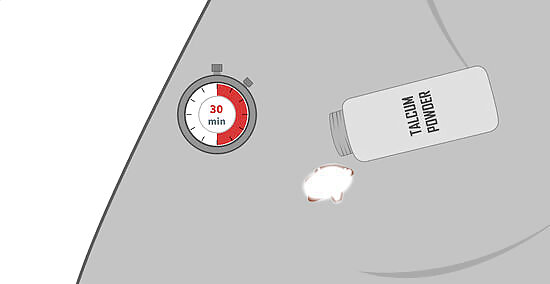
Use cornstarch or talcum powder to soak up oil stains. Cover the stain with your chosen powder, wait 30 minutes, then shake the powder off. Soak a cloth with some dry cleaning fluid and blot the stain up. For extra stubborn stains, follow up with vinegar. While you are blotting the garment, you'll notice the stain transferring to the cloth. You'll need to use a clean portion of the damp cloth to avoid putting the stain back onto the garment. Once the stain is gone, dampen a clean cloth with water, and blot the area clean. Let the garment dry on its own. Oil-based stains will include lipstick, mascara, most sauces, and salad dressings. If the stain is very thick, try to scrape as much of it off as you can with your fingernail or the edge of a spoon.

Know what to use to blot up liquid stains. Blot as much of the stain up as possible using a clean cloth. Next, soak a clean cloth with a cleaner from the list below and blot the stain with it. As you continue to blot, the stain will transfer to your cleaning cloth. Be sure to switch to a clean part of the cloth to avoid transferring the stain back onto the garment. Once the stain is gone, blot the area with a clean, water-dampened cloth. Let the garment dry. Coffee and juice: white vinegar Ink-based: rubbing alcohol Milk or cream: Dry cleaning fluid Red wine: rubbing alcohol and white vinegar, or white wine Tea: lemon juice Mud: dish soap and white vinegar

Scrape gloppy, thick stains off before treating them. If you got a blob of sauce or salad dressing on your garment, you'll need to scrape as much of it off as possible using your fingernail or a spoon. Always start scraping from the outside of the stain and work your way in. Next, dampen a clean cloth with one of the the solutions below and blot the stain up. Keep blotting until the stain is gone, then let the fabric dry. Oil-based: Dry cleaning fluid Protein-based: wish soap Mustard: white vinegar
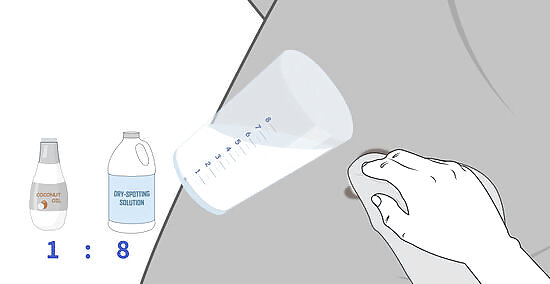
Remove stains using a homemade dry-spotting solution. Scrape as much of the stain off as you can using your fingernail. Next, create a dry-spotting solution using 1 part coconut or mineral oil and 8 parts dry cleaning solvent. Apply the dry-spotting solution to the stain, wait a few minutes, then blot it off using a clean cloth. Keep blotting until the stain is gone. Let the garment dry. Use care on fragile fabrics, such as silk. They can rip and tear easily. This is especially effective on nail polish stains. Consider placing a piece of behind the stain before you start using the dry-spotting solution. This will help absorb the stain and keep it from transferring.
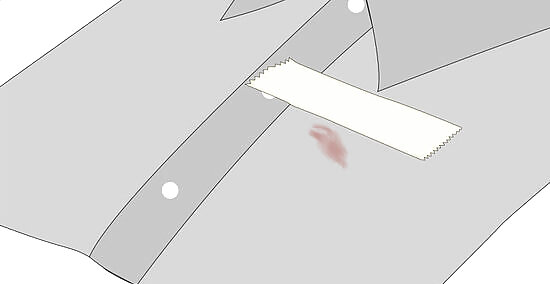
Try using tape to lift dry stains off of non-washable fabrics. Simply press a piece of tape down onto the stain, and then peel it off. If the stain was oil-based, such as lipstick, there might be some residue. Simply sprinkle some talcum powder onto the stain, tap it down with your finger, then shake it off. Repeat this step, if necessary. This works great on silk.
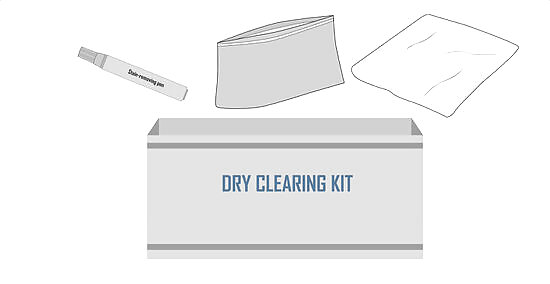
Try using a dry cleaning kit. The kit usually contains a stain-removing pen, a plastic zippered bag, and some cleaning clothes. Start by drawing over the stain with the provided stain-removing pen. Place the garment into the bag and toss in the provided cleaning cloth. Place the bag into the dryer, and dry it according to the manufacturer's directions (usually about 30 minutes). Once the time is up, remove the garment from the bag and hang it up so that it can dry; the bags can produce a lot of steam inside. Keep in mind, however, that heat tends to set stains as well. You must treat the area first with the stain removal pen. Consider taking the garment to a professional dry cleaner instead. Sometimes, the pen will not get the stain out.
Removing Stains from Fur, Leather, and Suede
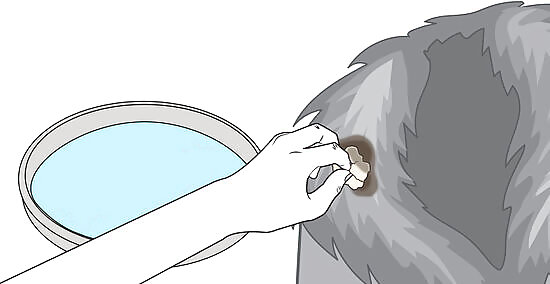
Use a damp cloth to remove small stains from fur. Dampen a piece of cloth, then dab the stain with it. Do not rub or scrub. Once the stain is gone, blot it dry with a piece of dry cloth. Let the fur dry on its own. Do not use soap on fur.
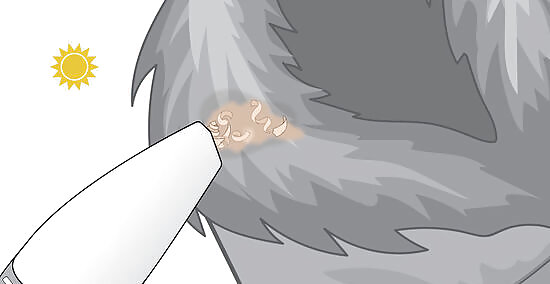
Try using sawdust to remove larger stains from fur. Spread the fur down on a flat surface. Sprinkle sawdust over the stain and leave it there overnight; the sawdust will absorb the stain. Vacuum the sawdust from the fur the next morning using the upholstery (or a lower setting) on your vacuum. A stronger setting might damage the fur. Furriers often use this method to clean fur. Consider taking your coat to a professional cleaner or furrier for stubborn stains.
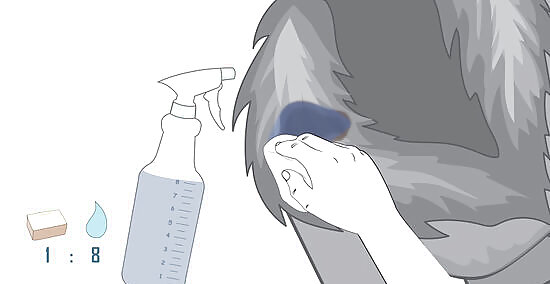
Use a soap and water solution to remove stains from leather. Pour 1 part liquid soap with 8 parts filtered water into a spray bottle. Shake the bottle to mix, then spray the solution onto a cloth. Wipe the stain down with the dampened cloth. Try to go with the leather grain rather than against it. Once the stain is gone, let the leather garment dry on its own, away from sunlight. Consider treating the spot afterwards with some leather conditioner to keep it supple. Use a mild soap, such as face soap or dish soap. If you don't have access to filtered water, use bottled or distilled water instead. Never spray the solution directly onto leather. This will cause the leather to become too damp, which in turn can damage it.

Use tape to remove dirt from patent leather. Simply press the tape over the stain, then peel it off. The tape will have lifted the dirt away. Some people find that this also works on removing lipstick stains from leather as well.

Use hairspray to remove permanent marker from leather. Spray the stain with some hairspray, then wipe it away with a clean cloth or towel. Clean off any leftover hairspray, then apply some leather conditioner to keep the leather smooth and supple.
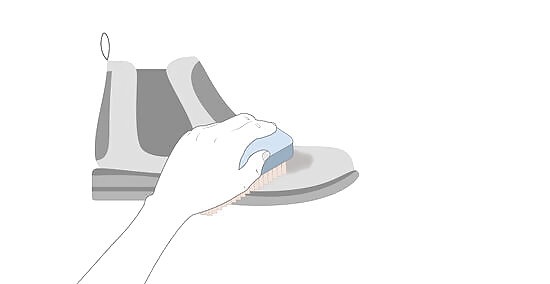
Use a suede brush to loosen stains on suede clothing. The bristles will also help loosen the fibers and make them easier to work with. Sometimes, this is all that is needed to remove stains from suede. If you don't have access to a suede brush, a regular eraser will do in a pinch. A piece of stale bread is great for removing dirt stains.

Try using cornstarch to remove stains from suede. Sprinkle some cornstarch over the stain. Leave it there for a few hours to overnight, then buff the stain with a suede brush. The cornstarch will have absorbed the stain, and the brush will sweep the cornstarch off. This method works great on oil and sweat stains. If you can't find cornstarch, try cornflour instead.
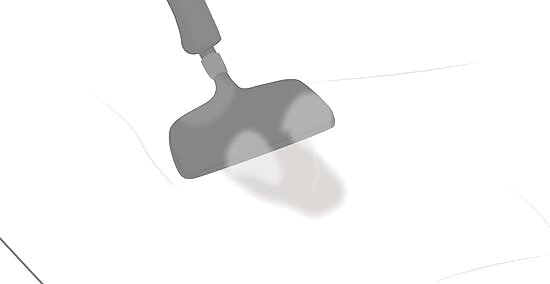
Try steam cleaning suede garments. Hang the garment in the bathroom just after you take a hot shower. The steam will help loosen certain stains. If necessary, brush the stain out using a suede brush.
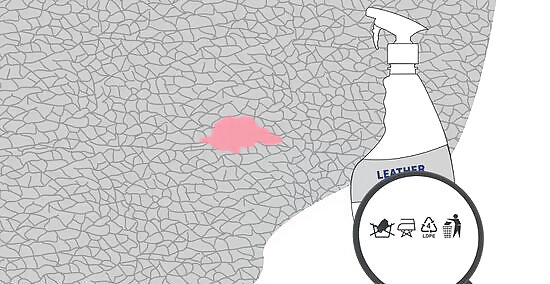
Use a suede or leather cleaner for tough stains and follow the directions on the package. Make sure that you are using a leather cleaner that is specifically formulated for the type of leather you are working with. The wrong type of cleaner can damage your garment. Most leather cleaners will say what type of leather they are good for, and most garments will say what type of leather they are made from. The same will go for suede. You may need to use the cleaner all over the garment to hide any potential discoloration.
Removing Stains from Washable Fabrics

Use tape to remove dry stains. If you got a patch or dirt, chalk, or powder foundation on your clothes, place a piece of tape onto the stain and peel it off. Keep repeating this until the stain is gone. If necessary, rinse the residue out with water.
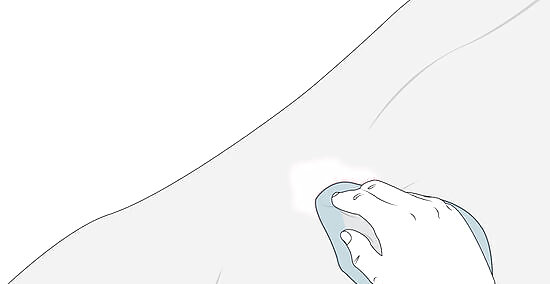
Try blotting the stain with water first, unless it is an oil-based stain. Sometimes, this is all you need to do in order to get rid of the stain. You can also use club soda or soda water in a pinch. If possible, rinse the stain out from behind the fabric. If you are at work or at a party, then try blotting it with a damp towel or tissue instead. Most sauce stains will be oil-based. Mascara and lipstick stains will also be oil-based. Avoid using water on them, especially soda water or club soda. If the stain is coffee, sprinkle some salt onto it first, and use club soda or soda water to rinse it out.

Use baking powder, cornstarch, or baby powder to remove oil-based stains. Slip a piece of cardboard behind the stain to protect the fabric underneath. Blot up as much of the stain as possible. Choose your powder, and apply a generous amount over the stain. Leave it on for the specified amount of time, then dust it off. The powder will have absorbed the stain. Try are great for oil-based stains, including sauces. Leave baking powder on the stain for 30 minutes, then shake it off. Leave cornstarch on the stain for 10 minutes, then shake it off. Press the baby powder into the stain and leave it there overnight. Shake it off the next morning. Try an artificial sweetener in a pinch. Sprinkle a few packets of sweetener on your stain and pat it firmly onto the stain. Let the sugar absorb the grease, then brush off the excess. Use baking soda on sweat stains. Make a paste out of baking soda and water and scrub it into the stain. Wait one hour, then rinse it off.

Try water or hairspray to remove blood stains. Begin by rinsing the stain out with cold water. If possible, try to rinse it from behind the fabric. If the stain is still there, spray some hairspray over the stain, wait a few minutes, then wipe it off with a damp piece of cloth. Soda water or club soda will also work in a pinch. If the blood stain is old or dry, soak the stain with hydrogen peroxide. Hairspray also works on lipstick, mascara, and other oil-based makeup stains. Simply spray the stain with hairspray and wait 10 minutes. Blot the stain off with a damp cloth.

Use some dish soap and water to remove makeup and oil-based food stains. Dab or scrape as much of the stain off as possible. Pour some dish soap onto the stain and wait 10 to 15 minutes. Gently rub the stain with a damp towel. Use circular motions, and work from the outside in. This will prevent the stain from spreading. When you are done, rinse the soap out using water. For spray tans and tinted moisturizers, simply dab the stain with a warm, soapy sponge. Rinse the soap out when you are done, if necessary. You can also use shampoo instead of dish soap in a pinch. Both are effective at cutting grease.
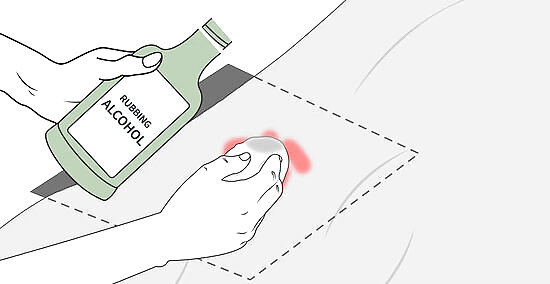
Use rubbing alcohol to remove lipstick, ink, and red wine stains. Place the garment down on a flat surface and tuck a paper towel inside the garment, right behind the stain. Soak a cotton ball with rubbing alcohol and blot the stain with it. If necessary, repeat the process inside the garment. Remove the paper towel from the inside, and if needed, rinse the stain with water. Let the garment dry on its own. This may also work on other makeup stains as well, such as mascara or eyeliner. You can use rubbing alcohol or hair spray because it has alcohol in it. Apply it directly to the stain. Then dab it gently with another rag to absorb the ink from the fabric. Repeat this process until you notice the stain starting to disappear. Once you notice very little to no ink left behind, you can wash the fabric in the machine.
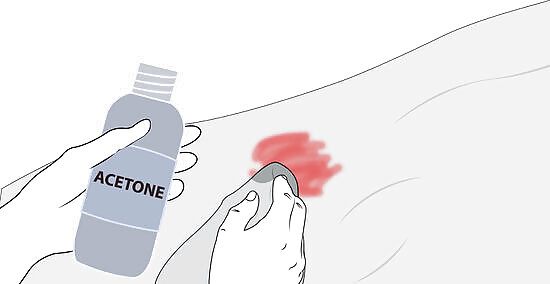
Use acetone to get rid of nail polish. Start by scraping as much of the nail polish off as possible. Next, soak a cloth with acetone, and blot the stained area with it. Once the stain is gone, let the garment dry on its own. You can also use nail polish remover, but it may not be as effective. If you are doing this on a colored piece of fabric, you might want to test the acetone in an inconspicuous area first, such as inside the hem. Acetone is also capable of removing dyes, and can work as bleach.
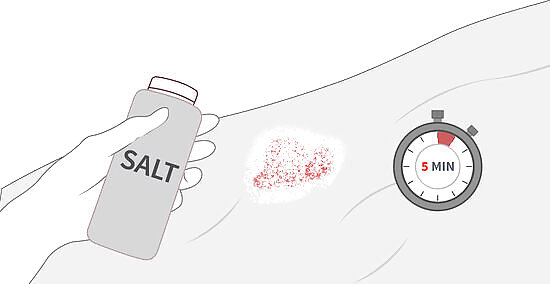
Work quickly with red wine stains. To keep red wine stains from setting, pour some salt or white wine on it. Wait abut five minutes, then rinse it. Blot any residue up with rubbing alcohol. Rinse the fabric and pat it dry. If that doesn't work, try one of the following: Mix together equal parts of liquid soap and hydrogen peroxide. Blot the stain until it until it disappears. Mix together 1 tablespoon of white vinegar, 1 tablespoon of liquid soap, and 2 cups (475 milliliters) of water. Blot the stain with this solution until it is gone.
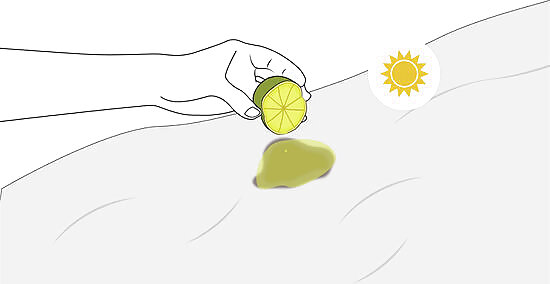
Use lemon or hydrogen peroxide to work out stubborn juice stains or sweat stains. Simply pour some lemon juice or hydrogen peroxide onto the stain, leave it to dry overnight, then rinse it out the next morning with water. Both lemon juice and hydrogen peroxide can bleach fabric. Consider testing it out in an inconspicuous area first.















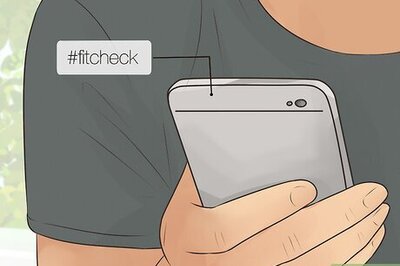


Comments
0 comment